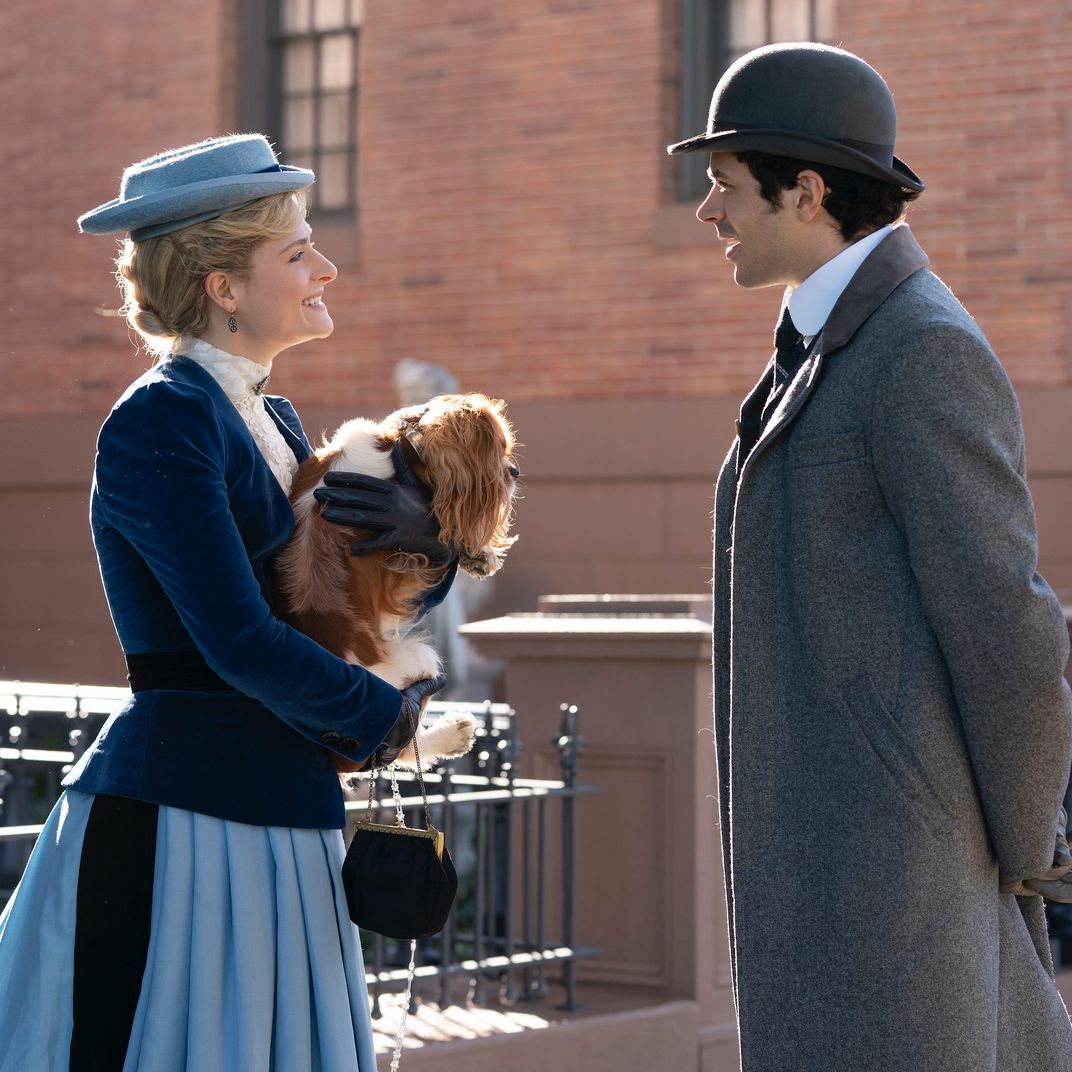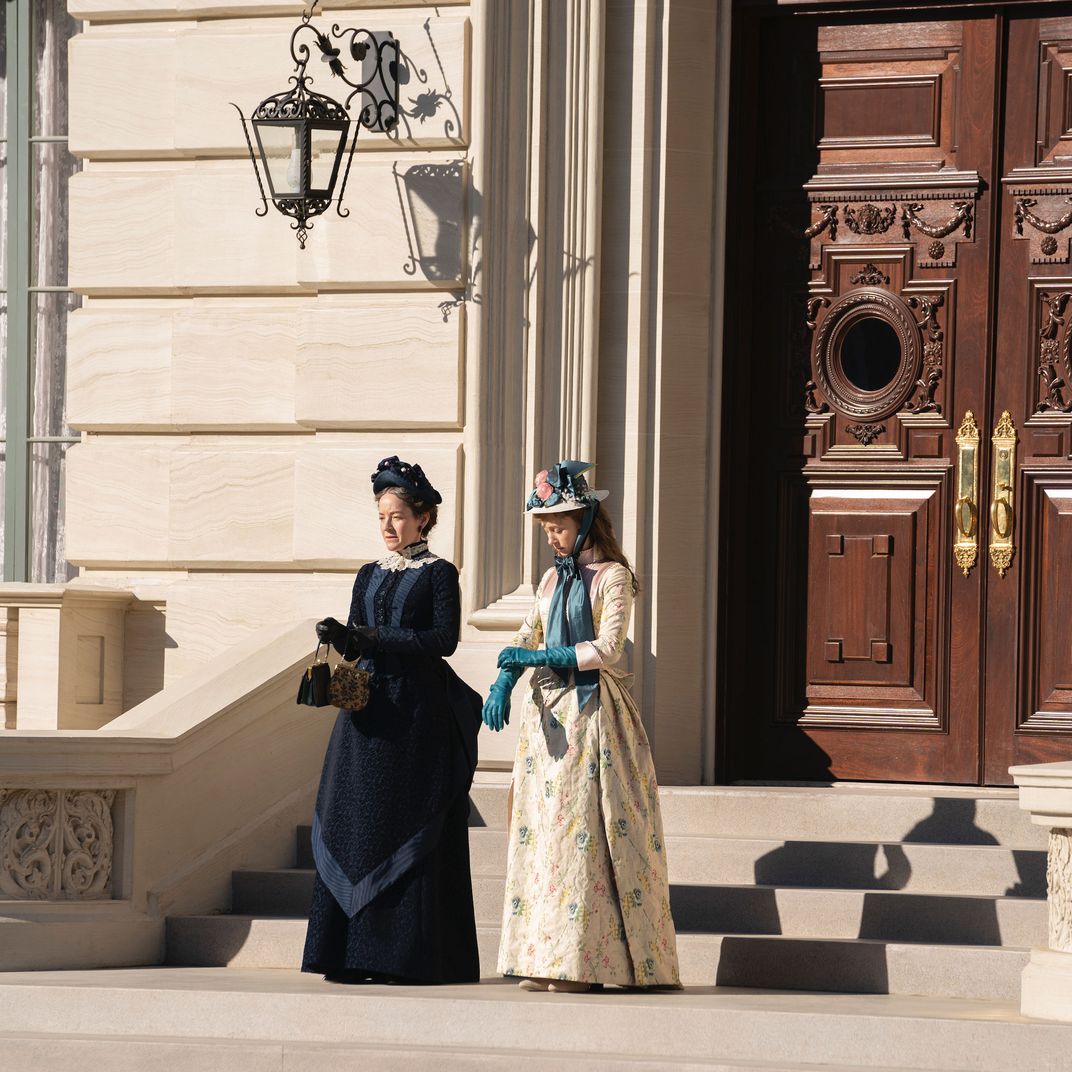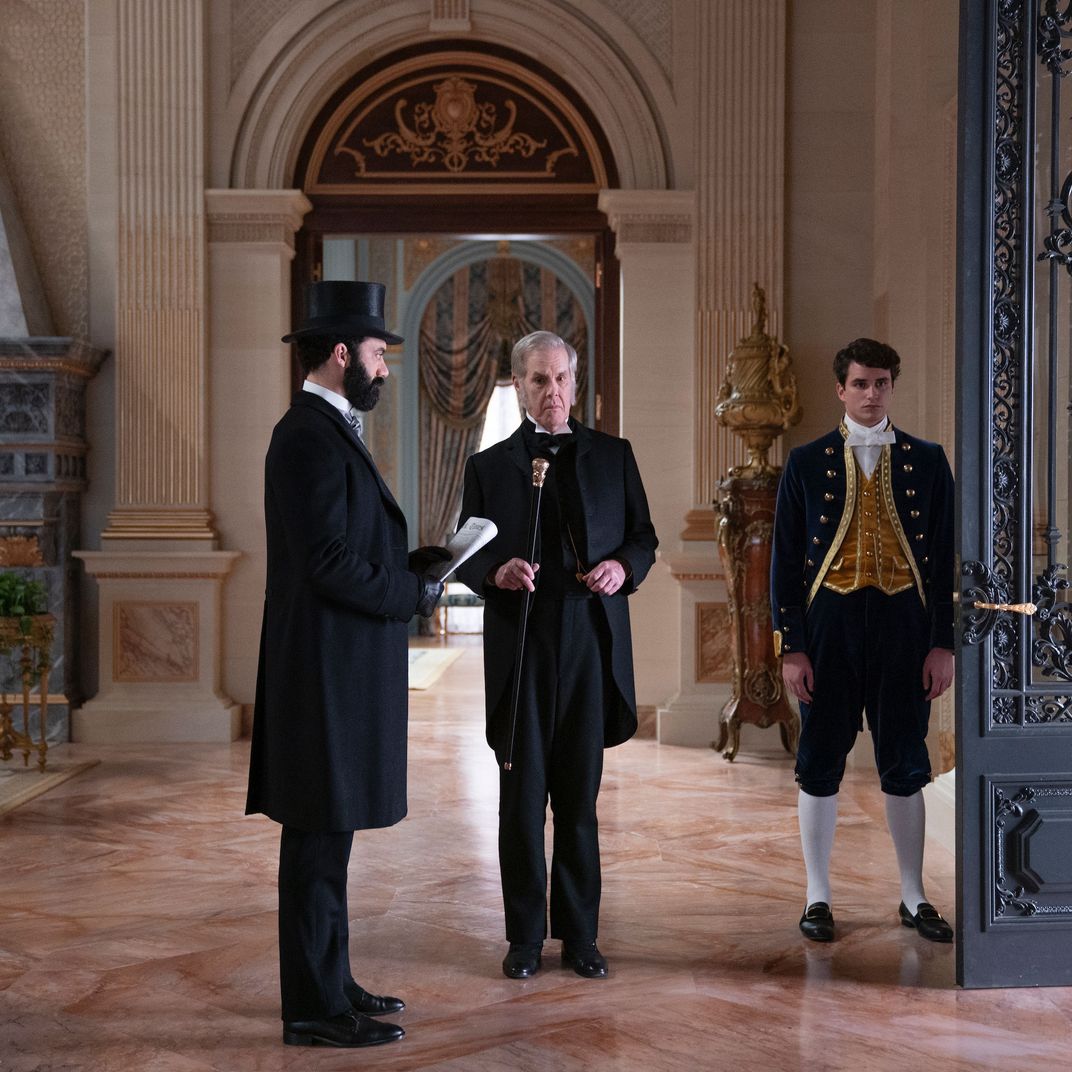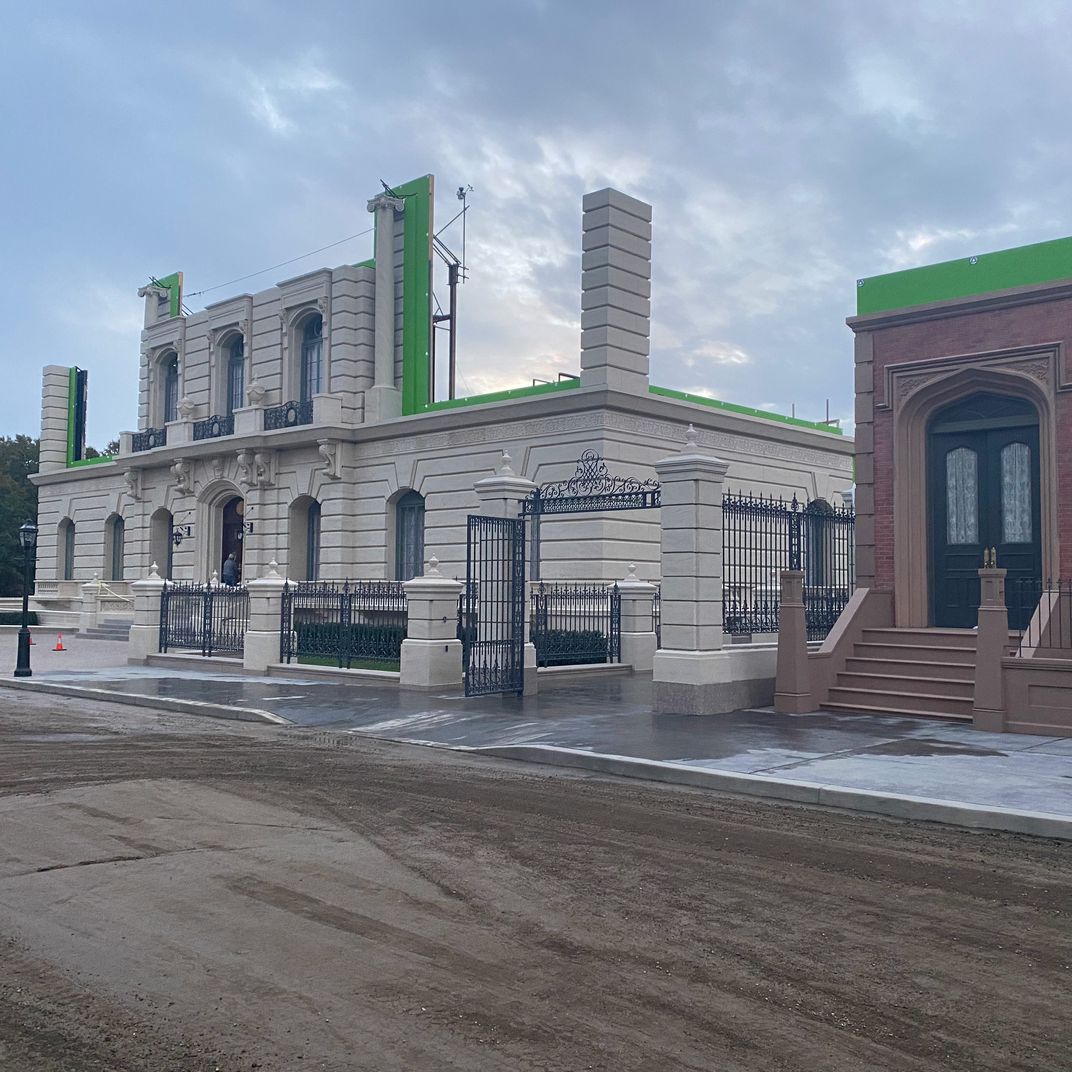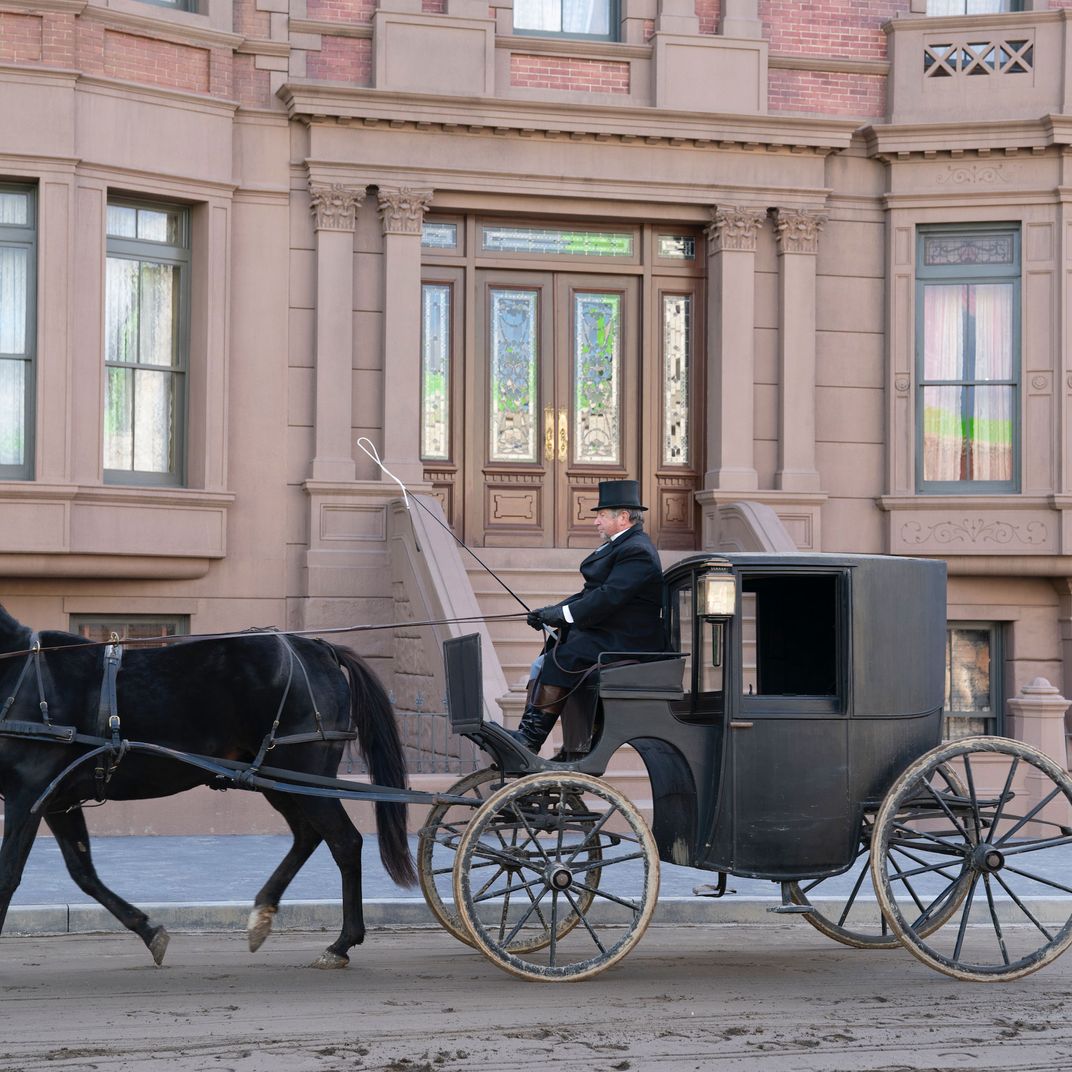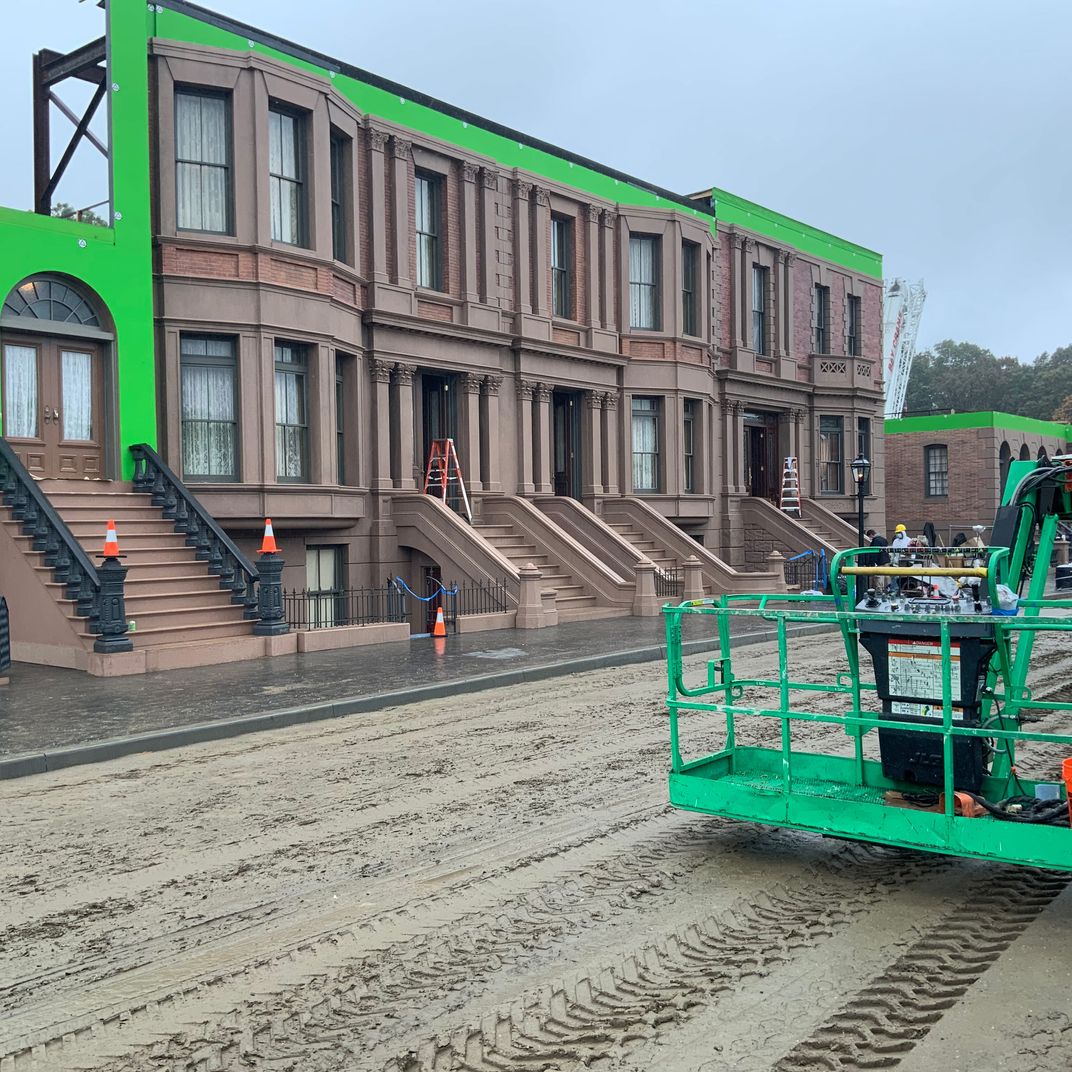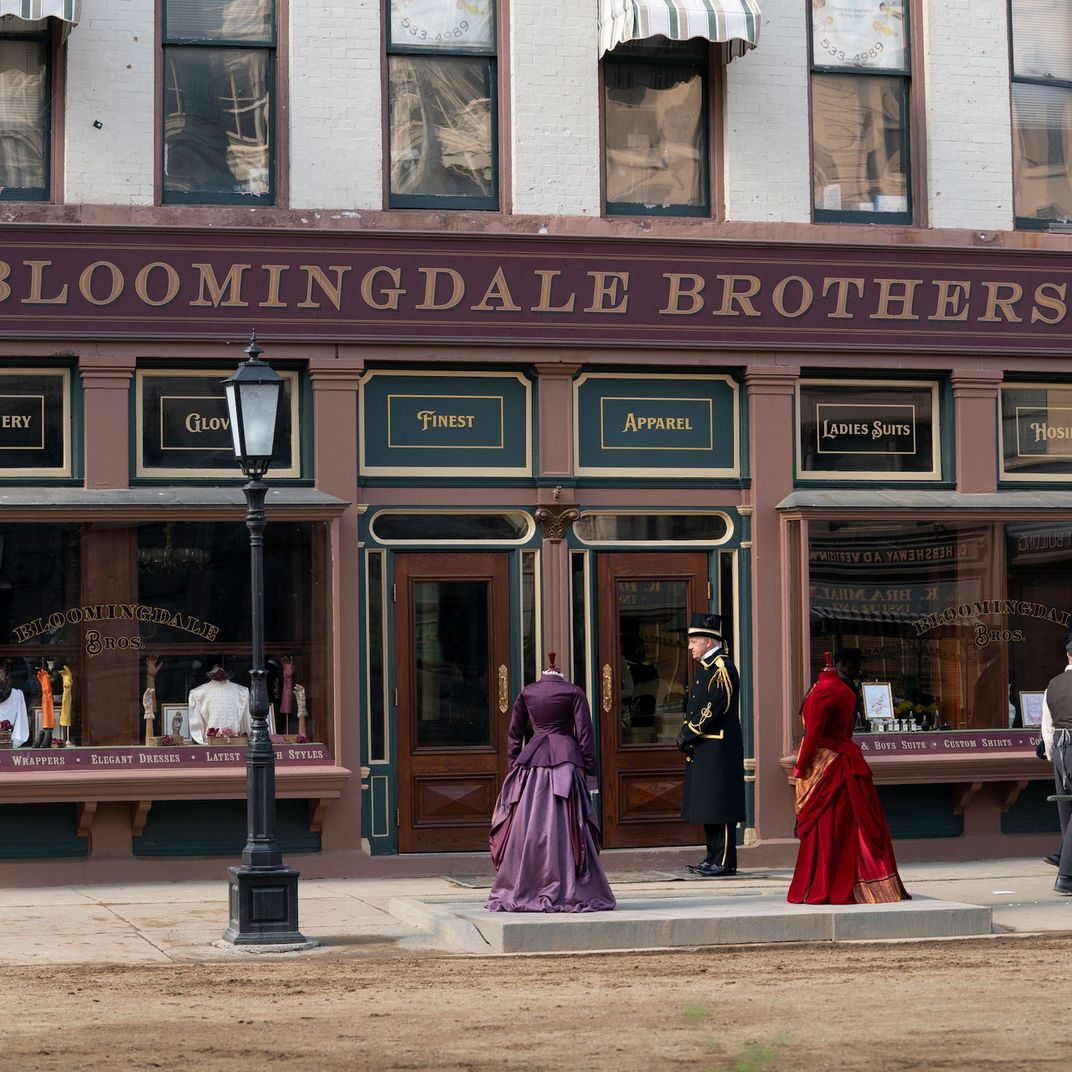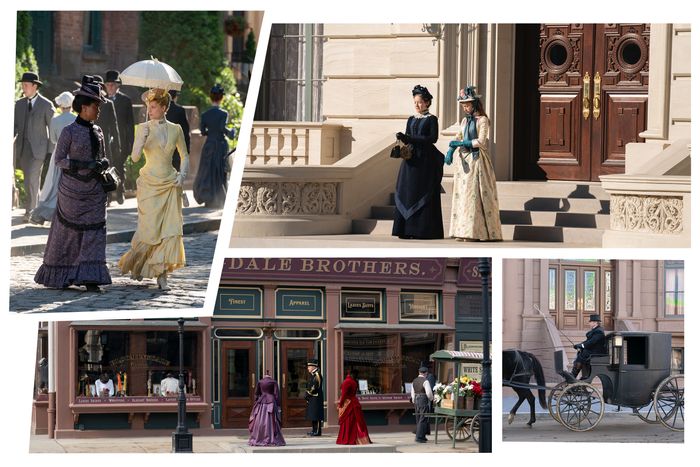
In the opening scene of The Gilded Age, the new Julian Fellowes period drama on HBO, the scaffolding is starting to come down from the brand-new Russell House, a mansion at the corner of Fifth Avenue and 61st Street that oozes extravagance: Greek columns, huge slabs of limestone, ornate carvings. And we see this all through the window of Ada Brook and Agnes Van Rhijn, the two sisters living across the street in much more dour brownstone accommodations who are peering through their lace curtains at what they perceive to be a gratuitous, and vulgar, display. Whereas Fellowes’s Downton Abbey was an upstairs-downstairs drama, The Gilded Age is more of an across-the-street rivalry, one where class anxiety brews between old and new money. The social-climbing wife of a railroad tycoon is intent on using her new home to court (and eventually infiltrate) high society, whose members sneer and judge. What a warm welcome to the neighborhood.
Neither the mansion nor this corner of Fifth and 61st is real. Nor are the houses around it. The block was built outside at the Museum of American Armor, a military exhibition hall in Old Bethpage, New York — chosen for its proximity to Gold Coast Studios, the only soundstage big enough to build a set for the Russell House’s 30-foot-tall entryway — or rendered in CGI by production designer Bob Shaw and his team of scenic artists and set designers. Downtown Troy, in New York’s Capital District, stepped in for 1890s New York City in a few scenes, and the show also filmed interior scenes at the great estates of Rhode Island, like the Breakers, Marble House, and the Elms. Lyndhurst Mansion, in the Hudson Valley, makes an appearance too. But Shaw knew he would have to build the street corner at the heart of the show’s conflict from the ground up. “The biggest thing in the show is the relationship between the two houses and the views they have of each other,” Shaw says. “There was no way we were going to find a practical location” — that is, a physical street corner — “for that.”
During the actual Gilded Age, the newly monied competed to flaunt their wealth, often by one-upping each other’s elaborate homes on Fifth Avenue. Cornelius Vanderbilt II, the eldest grandson and namesake of the railroad baron, built one of the most lavish houses ever constructed in America in 1883 at Fifth Avenue and 57th Street. Although a lot of those mansions have been demolished — Vanderbilt’s came down in the late 1920s, making way for Bergdorf Goodman — Fifth above 70th Street has enough survivors to give a faint sense of what it must have been like. Andrew Carnegie’s 64-room Georgian mansion became the Cooper Hewitt in 1976. The oil industrialist Henry Sinclair’s French Renaissance mansion became the Ukrainian Institute in 1955. The Burden-Kahn mansion, on East 91st Street, is now a private school and wedding venue. Henry Clay Frick’s house is, of course, the Frick Collection.
Shaw and his team visited all of these mansions for the show, and many more in and out of the city. “I’ve cherry-picked from so many places,” he says. The Sloane House lent its overall aesthetic, the Carnegie Mansion its entry courtyard. “We knew there was going to be a constant parade of coaches and things arriving at the Russell House, and just pulling up to the curb didn’t make it seem important enough,” Shaw explains. The immense wooden exterior doors reference the ones on the Lotos Club, and the iron ones inside (which are made of PVC on the set) riff on those at Marble House, in Newport, Rhode Island. Because he’s a New York City history buff, Shaw — who was also a production designer on The Irishman, Boardwalk Empire, Mad Men, and Wolf of Wall Street — also knew about long-gone places he wanted to mine, like the William Clark house. Books like Empty Mansions supplied a lot of detail, too.
One of the most obvious class distinctions between old and new money shows up in the building materials. Brownstone, which was typically quarried in Connecticut, was favored by the rich in the mid-1800s because its dark hue was associated with a romantic view of nature. “Houses built of stone, or having stone fronts are the only kind which meet with favor from the moneyed portion of our fashionable circles,” a newspaper in the 1860s reported. The set designers faked it with foam blocks coated in tinted cement. But taste changed during the Gilded Age, when European palaces became popular with the upwardly mobile. The Russell House is clad (or at least is supposed to be clad) in pearly white limestone, which would have been imported from France. Shaw borrowed this material detail from Edith Wharton’s Age of Innocence, which featured a character based on Wharton’s aunt Mary Mason Jones, one of the first high-society members to use white marble on her house. When Jones built her mansion in 1867, her vision was more aligned with French country estates than New York City townhouses; she wanted no dull brownstone or American-style high stoops, preferring something like Fontainebleau. The set-building team mimicked the limestone’s grain by dabbing at fresh cement with cellulose sponges cut at an angle.
The references for the Brook–Van Rhijn house across the street from the Russell House are more plentiful, especially further downtown, around Gramercy Park and Union Square. The south side of 17th Street, just east of the park, has what Shaw calls “plus-size brownstones” — larger and more ornate than typical mid-block rowhouses. Wharton, Shaw notes, “wrote that entire blocks of the city were dipped in chocolate.” And though there are quite a few intact stretches from that world remaining in Brooklyn, he says, the city makes it hard to turn back the clock. “Given the control that we needed in order to change the street surface, put down dirt, or put down cobblestones and have horses and buggies,” he says, “it’s just not really possible to do in Brooklyn anymore.”
The solution was downtown Troy, a generally quieter place with huge swaths of cityscape that date to the mid-19th century: blocks of brownstone houses; old storefronts. The 1993 film adaptation of The Age of Innocence was shot in Troy, so Shaw had a hunch that the city might work for The Gilded Age. “We knew that Troy was a place to look into, but I didn’t know it was gonna be as bountiful as it was,” he says. “I mean, we really could walk for blocks and blocks in Troy.” The scenes in episode four where Marian, Ada and Agnes’s niece, goes shopping at “Bloomingdale Brothers” with Peggy Scott, the woman she befriended on her train ride from Pennsylvania to New York, were filmed in Troy, and walks around town were all filmed there as well. However, the sweeping aerial shot we see of East 61st when Marian loses her dog in the first episode is all VFX.
The production design team for The Gilded Age used a mix of sets, real mansions, and visual effects to re-create 1890s New York.
To create the opulent Russell House, production designer Bob Shaw sampled details from period mansions like the Cooper Hewitt and the Lotos Club.
The entryway to the Russell House is 30 feet high, and there was only one sound stage in the New York City area big enough to build it: Gold Coast Studios, on Long Island.
As a rule, Shaw and his team constructed physical sets or shot in a real location for any part of a set that an actor stands next to, then filled in the rest digitally.
Brownstones near Union Square inspired the Brook–Van Rhijn house.
The set designers faked the brownstone with foam blocks coated in tinted cement.
Downtown Troy stepped in for Gilded Age Manhattan.
While few unbroken stretches of Gilded Age Manhattan remain intact, there are blocks and blocks of barely altered 19th-century streets in Troy.
The production design team for The Gilded Age used a mix of sets, real mansions, and visual effects to re-create 1890s New York.
To create the opulent Russell House, production designer Bob Shaw sampled details from period mansions like the Cooper Hewitt and the Lotos Club.
The entryway to the Russell House is 30 feet high, and there was only one sound stage in the New York City area big enough to build it: Gold Coast Studios, on Long Island.
As a rule, Shaw and his team constructed physical sets or shot in a real location for any part of a set that an actor stands next to, then filled in the rest digitally.
Brownstones near Union Square inspired the Brook–Van Rhijn house.
The set designers faked the brownstone with foam blocks coated in tinted cement.
Downtown Troy stepped in for Gilded Age Manhattan.
While few unbroken stretches of Gilded Age Manhattan remain intact, there are blocks and blocks of barely altered 19th-century streets in Troy.
As a rule of thumb, Shaw and his team built physical sets for any part of the house that the actors touch. For the exteriors, this typically meant the first and second stories. Then they used visual effects — which have gotten incredibly sophisticated even compared to when Shaw was working on Boardwalk Empire a decade ago — to fill in the rest. As often as possible, the VFX team started with photographs of real architectural surfaces instead of rendering them completely from scratch. “We sometimes say it’s kind of Frankensteining it, but as if Frankenstein were made of 100 percent people parts,” Shaw says. “Our aim is to make it out of as many ‘real parts’ as possible, and we might have to composite them together. For a window, we photograph it and replicate the photo rather than making it as a 3-D model.”
Although the architecture and interiors are just about impeccable, there’s one thing that is a clear anachronism: just how spotless East 61st Street is in those first scenes. In the 1890s, New York was a tremendously filthy place, its streets muddy and covered in manure. “It’s cleaner than I would like it to be,” Shaw admits. Gilded Age has just been renewed for a second season, and we might see more of the city’s grittiness in the future. “In episode two, it’s rainy and muddy, and people are getting out of their carriages, and it’s a mess,” he says. “That’s more of our goal. Going forward, we need more dirt.”
More Gilded Age stories
- Ron Chernow Bought at the Dakota
- One of the Last Gilded Age Mansions on Fifth Avenue Is for Sale
- One of the Last Private Townhouses on Washington Square Park


